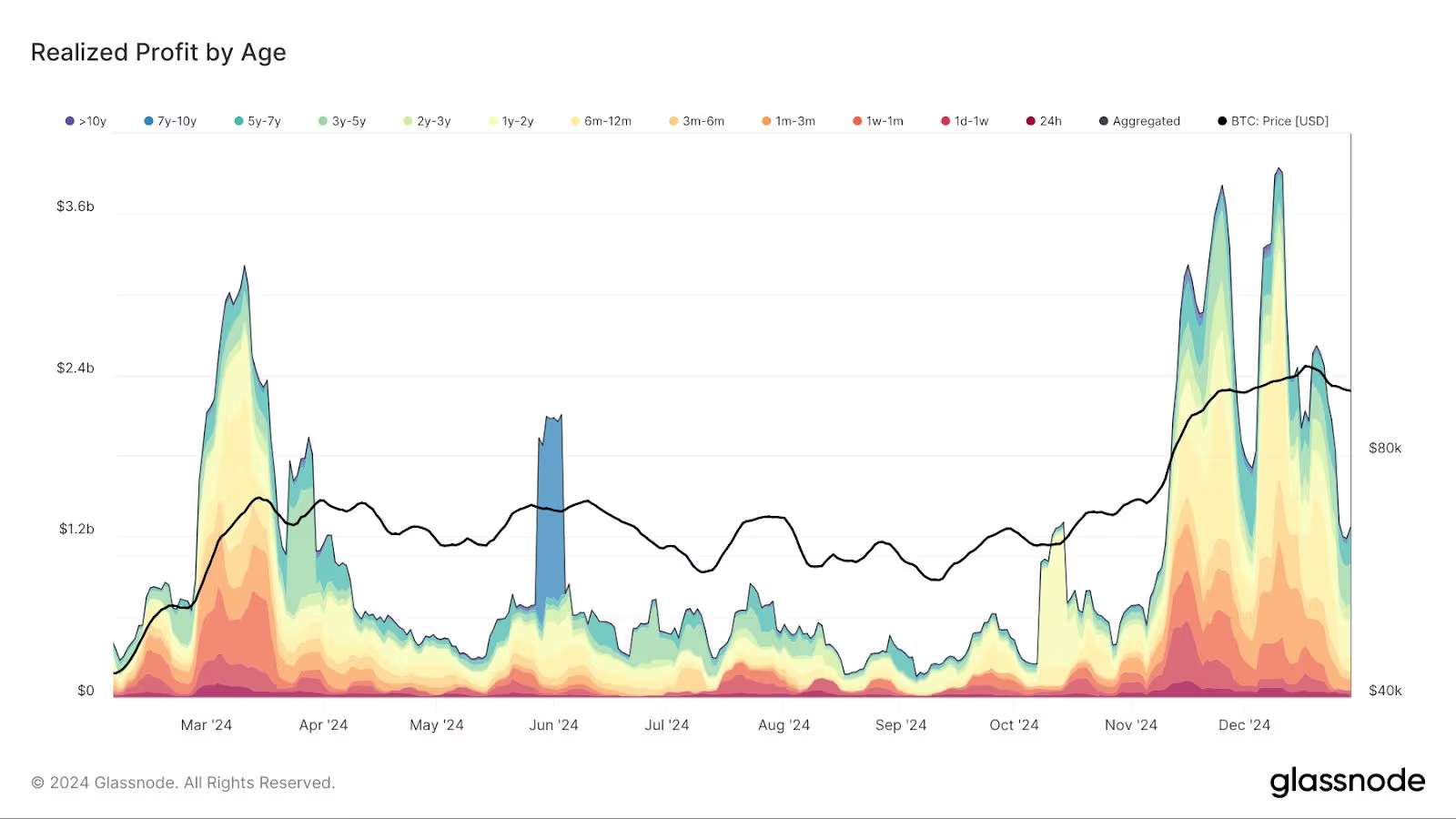Bitcoin Drops to $92,000 Amid Profit-Taking & Macroeconomic Concerns
As 2024 draws to a close, Bitcoin’s price has fallen to $92,000, driven by profit-taking from long-term holders and mounting macroeconomic concerns.
What You Need to Know:
Bitcoin’s price has fallen 1.8% in the last 24 hours to $91,800, reaching its lowest point since December 5, when the cryptocurrency broke through $100,000 for the first time. Bitcoin is down more than 14% from its December 17 high of $108,278, signaling a significant pullback.
Ether (ETH), the second-largest cryptocurrency, has also experienced a decline, falling by 0.7% to $3,320. Ethereum’s price is now 17% below its recent highs and remains far from its all-time peak of $4,820 reached in 2021. Solana (SOL) has shown a bit more strength, with the SOL/BTC ratio up 0.35% today
The CoinDesk 20, an index tracking the top 20 cryptocurrencies by market capitalization, excluding stablecoins and memecoins, has dropped 3.74%. Ripple (XRP) and Stellar (XLM) have taken the largest hits, losing 6% and 6.3%, respectively. Litecoin (LTC) has been the most resilient coin, losing just 1.9%.
Cryptocurrency-related stocks have also seen significant declines. MicroStrategy (MSTR) fell 7%, while Coinbase (COIN) dropped 5.3%. Bitcoin mining companies like MARA Holdings (MARA) and Riot Platforms (RIOT) have seen their stock prices plunge more than 7%.
Why Bitcoin is Seeing Profit-Taking
The primary driver of Bitcoin’s recent price decline is extensive profit-taking. After Bitcoin surged more than 117% this year, investors are cashing out. The seven-day moving average of profit-taking has surpassed $1.2 billion, which, while down from the December 11 peak of $4.0 billion, remains much higher than usual. Notably, long-term Bitcoin holders—those who have held Bitcoin for several years—are responsible for the bulk of this selling.

Bitcoin profit-taking (Glassnode)
Macroeconomic Factors Weighing on Bitcoin and Crypto
In addition to profit-taking, macroeconomic factors are putting downward pressure on the market. The U.S. Chicago PMI (Purchasing Managers’ Index) recently recorded its lowest reading since May, signaling a slowdown in economic activity. The data suggests that a broader economic slowdown may be in the works, adding uncertainty to the market.
The Federal Reserve’s interest-rate policy going into 2025 is another point of concern for investors. The U.S. central bank has indicated that it will likely pause rate cuts until at least March 2025, which has increased market volatility. Furthermore, uncertainty surrounding the upcoming inauguration of President-elect Donald Trump on January 20 could be influencing investor sentiment, particularly in traditional markets like the S&P 500, Nasdaq, and Dow Jones, which are all down by more than 1%.
Expert Outlook: Bitcoin and Crypto in 2025
Despite the recent pullback, many experts remain optimistic about Bitcoin’s future performance. “The market exceeded expectations in 2024, but signs of exhaustion indicate the need for consolidation,” said Joe Carlasare, a partner at Amundsen Davis, in a recent interview with CoinDesk. “Looking ahead to 2025, I’m optimistic but expect the path to diverge from consensus, as markets often do. Bitcoin’s adoption continues to grow, and I anticipate it will generally move in line with traditional markets. If the U.S. avoids a significant growth slowdown, Bitcoin should perform well, though the ride may be bumpier than in 2024.”



